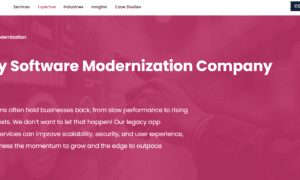Outsourcing software development presents numerous advantages, however it is crucial to be aware of potential pitfalls in order to navigate the process successfully.
This guide will explore the common outsourcing challenges and provide essential strategies to help you avoid them. Get ready to optimize your outsourcing endeavors and achieve successful software development outcomes.
Pitfall 1 – Poorly Defined Project Scope
- Unclear project scope poses challenges in accurately estimating time and effort, ultimately resulting in unrealistic timelines and exceeding projected costs.
- Poorly defined project scopes make it hard for the outsourced team to understand requirements and objectives, resulting in subpar implementation and disappointing stakeholders.
- Ambiguity in project scope increases the risk of not meeting user and market expectations. This can lead to limited market success and user dissatisfaction.
Strategy 1 – Define a Clear Project Scope
- Define Goals and Objectives: Clearly state the project’s overall purpose to guide the development team and make sure all stakeholders are on the same page. This helps everyone focus on project goals and objectives.
- Analyze Competitors: Study competitors features and functionality to understand their strengths and weaknesses accordingly to add or remove features to increase your chance of success in the market.
- Create a Detailed Feature List: Make a comprehensive SMART feature list based on SRS and competitor analysis. Provide clear description along with expected outcomes for each feature to minimize misinterpretations.
- Identify deliverables & Technologies : Define what will be deliverables expected along clearly define acceptance criteria for the same.This help set clear expectations on deliverables and desirable outcomes. In case you want java programmers for hire , deliverables for java programmers will be java code, project documentation, and workflow etc.
- Document the scope : Create a detailed project scope document covering all aspects of the project. This should serve as a single reference point of documentation for all participants and helps maintain clarity throughout the project lifecycle.
Pitfall 2 – Choose the wrong outsourcing partner
- Choosing the wrong outsourcing partner may lead to inadequate quality standards and result in subpar project deliverables that do not meet user expectations.
- Collaborating with wrong outsourcing partners who lack the necessary skills often results in poor project outcomes with multiple rework and ultimately incurs additional costs over time.
- Partnering with an inappropriate outsourcing provider who lacks effective project management often results in missed project deadlines and reduces your chances of capitalizing on timely market opportunities.
Strategy 2 – Choose the Right Outsourcing Partner
- Consider their history and track record. Check their website, case studies, testimonials, and online reviews for insights into their past projects and client experiences.
- Look for experienced companies that have completed similar projects. If you are looking for a python developer for hire, consider companies that have experience in Python development. Look for their track record and past projects involving Python.
- Assess an outsourcing partner’s capabilities and client satisfaction, request references from them. Reach out to previous or current clients to gather feedback on aspects such as the quality of work, communication effectiveness, and their ability to meet deadlines.
- To evaluate the competence of an outsourcing partner, conduct technical and logical interviews. During these interviews, ask relevant questions or present problem-solving scenarios to assess their skills and expertise.
Pitfall 3 – Lack of clarity in communication
- Inefficient early communication leads to misinterpreting project requirements resulting in wrong implementation of project requirements that doesn’t meet your expectations.
- Lack of clarity in communication can impact effective collaboration and coordination among team members, leading to inefficiency and delays in their efforts.
- Inefficient initial communication increases the risk of late discovery of significant issues, resulting in extensive rework. This can have a negative impact on project timelines, costs, and stakeholder satisfaction.
Strategy 3 – Effective & clear communication
- Conduct focused meetings with a clear agenda to discuss project goals, progress, and challenges.
- Utilize reliable communication tools to facilitate real-time interaction and ensure easy access to information.
- Regularly seek feedback to foster improvement and openly address concerns. Emphasize the importance of clear and transparent communication by setting defined expectations and milestones.
- Build a positive relationship by fostering and understanding of each other’s cultures, expressing appreciation, and promptly addressing challenges that arise.
Pitfall 4 – Inefficient quality assurance
- Inefficient quality assurance during development can lead to a higher occurrence of bugs or issues in your software and reduces performance.
- Undetected issues can cause delays in the project timeline as additional time is required to fix those issues.
- Inefficient quality assurance in development can result in the release of unstable products, exposing them to security vulnerabilities and usability problems. This can make the software more susceptible to attacks and leave users unsatisfied with their experience.
- Neglecting quality assurance can have damaging effects on a company’s reputation. It can lead to a loss of trust, negative reviews, and long-term consequences for the business.
Strategy 4 – Establish Quality Assurance Processes
- Define clear standards and expectations for your product or service. This involves setting benchmarks, establishing quality metrics, and defining user acceptance criteria that will be used to evaluate the quality of your offerings.
- Create an end-to-end testing process that encompasses the entire development lifecycle. This process should be designed to identify defects, bugs, and other quality issues.
- Choose a reliable platform for tracking and managing issues. Create complex cases covering functionality, performance, security, and usability.
- Implement an automated integration, testing, and deployment pipeline. Monitor code coverage to ensure thorough testing.
- Hold regular meetings to review ticket progress and address challenges. Request detailed reports to track progress and identify bottlenecks.
Pitfall 5 – Not Protecting Your Intellectual Property
- Choosing an unsuitable outsourcing partner can expose your ideas and innovations to potential theft or unauthorized use. This can lead to the loss of intellectual property (IP) through unauthorized usage.
- Engaging with an inappropriate outsourcing partner can result in harm to your competitive position if they use your ideas without permission. It can also create challenges in differentiating yourself in the market if your ideas are leaked or utilized by the outsourcing team or even competitors.
- The absence of IP protection can give rise to legal challenges and potential lawsuits. Dealing with these issues requires significant time and resources, diverting valuable assets away from other important aspects of your business.
- Failure to protect your intellectual property (IP) can pose a risk to your reputation. It may lead to a negative perception among stakeholders and damage the trust they have in your ability to safeguard valuable ideas and innovations.
Strategy 5 – Protect Your Intellectual Property
Protecting intellectual property (IP) while outsourcing development is crucial to safeguard your ideas, innovations, and competitive advantage. Here are the strategies to protect Intellectual property-
- A strong NDA and clear relationship documents are crucial for outsourcing. The NDA should define confidential information, purpose, obligations, and agreement duration.
- Use Master Services Agreements (MSA) or Statements of Work (SOW) to outline project scope, ownership, and dispute resolution.
- Limit access to sensitive resources and implement strong access controls. Review the outsourcing provider’s track record for legal issues.
- Avoid subcontracting and freelancers if possible; establish contractual arrangements and confidentiality obligations.
- Consult your legal team for document review and guidance.
- Use secure communication channels and regularly update software. Monitor and audit the outsourcing team’s activities, review access logs, and conduct IP audits.
Bottom Line
Outsourcing software development offers cost savings and brings expertise and speed to the development process. However, it’s important to be aware of common pitfalls and implement proactive measures and strategies. To successfully outsource software development, prioritize clear communication, carefully select outsourcing partners, establish robust quality assurance processes, and protect your intellectual property. By following these steps, you can maximize the benefits of outsourcing while minimizing risks.



































